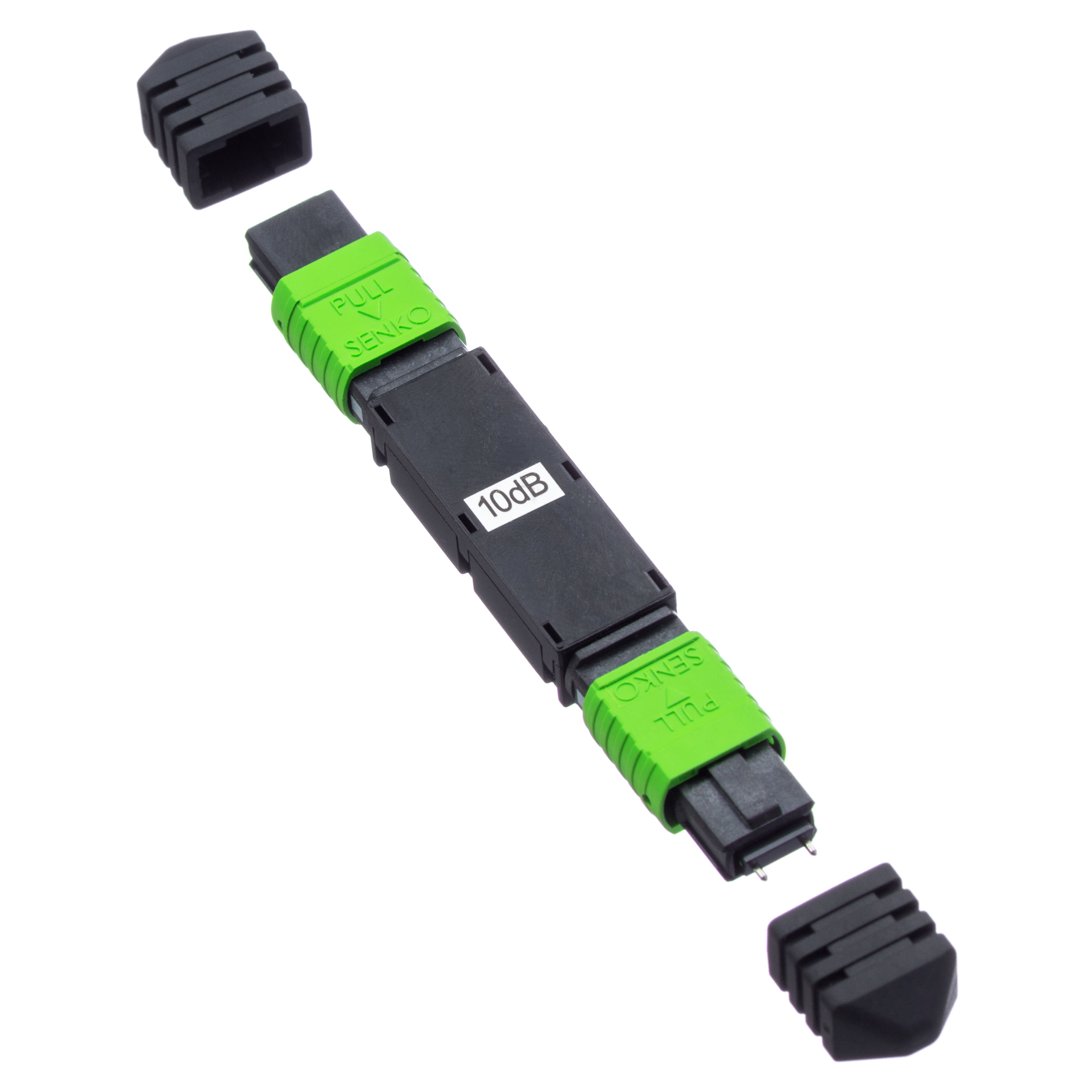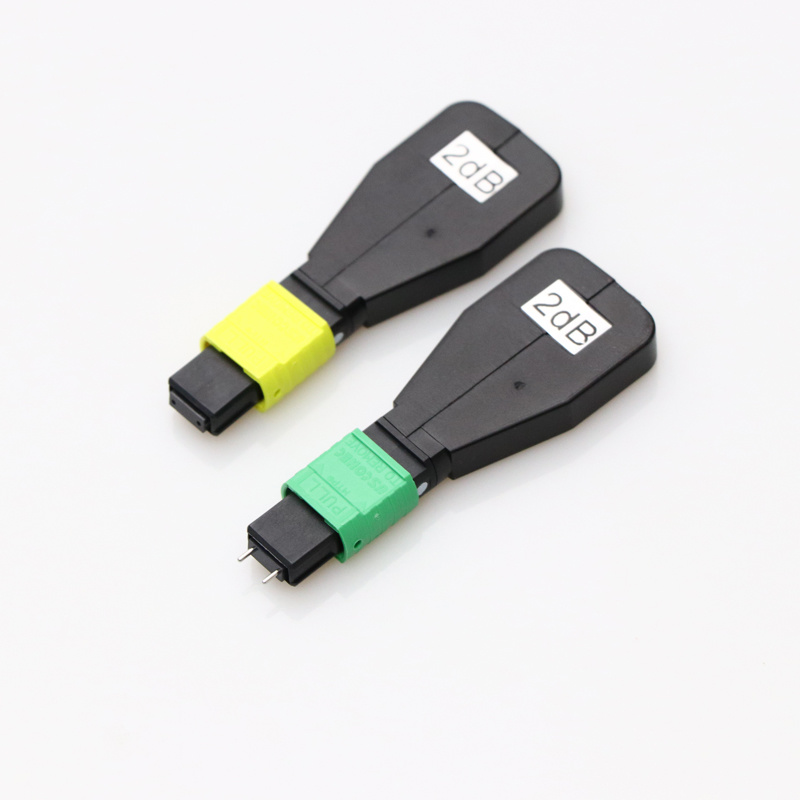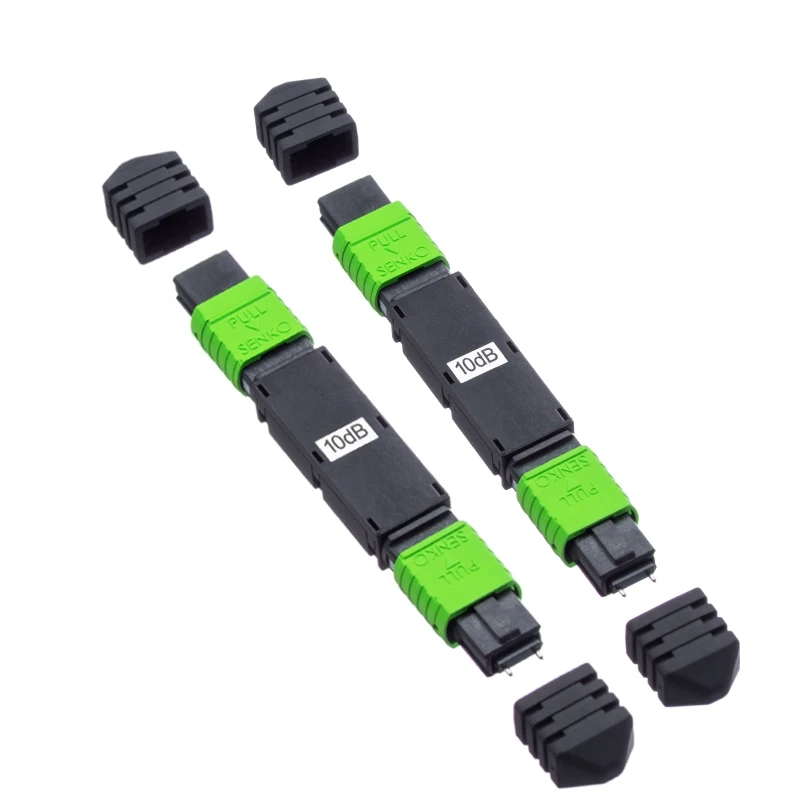Demystifying Fiber Optic Attenuators: Understanding MPO and APC Polishing

Understanding Fiber Optic Attenuators
Fiber optic attenuators are essential components in optical networks that help manage signal strength. They are used to reduce the power of an optical signal without distorting its waveform, ensuring optimal performance and preventing overloading of receiving devices. By introducing controlled loss into the fiber optic path, these attenuators allow for proper signal transmission and reception.
Optical attenuators come in various types, including fixed and variable options, allowing network professionals to choose the appropriate level of attenuation based on their specific requirements. Whether it's reducing excessive signal power or equalizing power levels between different fibers, fiber optic attenuators provide a reliable solution for maintaining signal integrity.
Exploring MPO Connectors and APC Polishing
Understanding MPO Connectors
MPO connectors, also known as multi-fiber push-on connectors, are widely used in high-density applications where multiple fibers need to be connected. These connectors feature a single rectangular ferrule that can accommodate multiple fibers, typically ranging from 8 to 72 fibers. MPO connectors provide a reliable and efficient solution for connecting fiber optic cables, reducing installation time and complexity.
The design of MPO connectors allows for easy mating and disconnection, making them ideal for applications that require frequent changes or additions to the network. They are commonly used in data centers, telecommunications networks, and other high-speed optical systems where space optimization is crucial.
Understanding APC Polishing
APC (Angled Physical Contact) polishing is a specialized technique used in fiber optic connectors to minimize back reflections. In APC polishing, the end face of the connector is polished at an angle rather than being flat or slightly curved like in other polishing methods. This angled surface reduces the amount of light reflected back towards the source, resulting in lower insertion loss and higher return loss.
APC polished connectors offer superior performance compared to other types of connectors when it comes to minimizing signal degradation caused by reflections. They are particularly important in applications where low return loss is critical, such as long-haul communication systems or networks with sensitive optical receivers.

Applications and Installation Considerations
Common Applications of Fiber Optic Attenuators
Fiber optic attenuators have a wide range of applications in long-haul and high-speed optical networks. They are commonly used in telecommunications systems, data centers, CATV (Cable Television) systems, and other environments where precise control of signal strength is necessary. In long-haul communication networks, fiber optic attenuators help optimize the power levels to ensure reliable transmission over extended distances. In high-speed optical networks, they play a crucial role in preventing signal distortion and maintaining signal integrity.
Installation Considerations
Proper installation of fiber optic attenuators is essential to ensure optimal performance. During installation, it is important to pay attention to factors such as alignment, cleaning, attenuation level, connector type, and environmental conditions.
Attenuator alignment should be carefully done to achieve maximum coupling efficiency between fibers. Any misalignment can lead to increased insertion loss or back reflections. Cleaning the connectors before installation helps remove any dirt or contaminants that could affect signal quality.
The choice of attenuation level depends on the specific requirements of the network. It is crucial to select an attenuator that provides the desired level of signal reduction without compromising system performance.
Connector type compatibility should also be considered during installation. Different connectors may require different types of attenuators for proper mating and optimal performance.
Lastly, environmental conditions such as temperature and humidity can impact the performance of fiber optic attenuators. It's important to ensure that the chosen attenuator is suitable for the intended operating environment.
Choosing the Right Attenuator: Fixed vs. Variable
Fixed Attenuators
Fixed attenuators provide a predetermined level of signal reduction and are commonly used in various applications. They offer a fixed attenuation value, typically ranging from 1dB to 30dB, allowing for precise control over signal strength. Fixed attenuators are simple to use, cost-effective, and suitable for most scenarios where a consistent level of attenuation is required.
These attenuators are available in different connector types and can be easily installed between fiber optic cables or devices. They help prevent signal overload and ensure optimal performance by reducing excessive power levels. Fixed attenuators are widely used in telecommunications networks, data centers, and other optical systems where maintaining a specific signal strength is crucial.
Variable Attenuators
Variable attenuators provide adjustable signal reduction, allowing users to fine-tune the attenuation level based on their specific needs. Unlike fixed attenuators, which offer a fixed attenuation value, variable attenuators allow for flexibility in controlling the signal strength.
Variable attenuators are more complex and expensive compared to fixed attenuators due to their adjustable nature. They often feature mechanisms such as dials or sliders that enable users to select the desired attenuation level within a specified range. These attenuators find applications in situations where dynamic adjustments to signal strength are required, such as testing and measurement environments or systems with varying link budgets.

Future Trends and Advancements in Fiber Attenuation
Advancements in Fiber Attenuation Technology
Advancements in fiber attenuation technology are focused on reducing insertion loss and improving return loss, which are critical factors in maintaining signal integrity. Manufacturers are continuously exploring new materials and manufacturing techniques to enhance the performance of fiber attenuators.
Innovative materials with lower intrinsic losses are being developed to minimize signal degradation during attenuation. These materials offer improved transmission characteristics, allowing for more efficient signal attenuation without compromising overall system performance.
Manufacturing techniques are also evolving to ensure precise control over the attenuation process. Advanced polishing methods and quality control measures help achieve consistent and reliable performance across a wide range of fiber attenuators.
Future Trends
The increasing demand for higher data rates is expected to drive the need for more advanced fiber attenuators. As networks continue to evolve, there will be a greater emphasis on achieving higher speeds and larger bandwidths. This will require fiber attenuators that can handle higher power levels while maintaining low insertion loss and high return loss.
Integration with other optical components is another future trend in fiber attenuation technology. The seamless integration of attenuators with other devices such as transceivers, switches, or multiplexers can simplify network design and improve overall system efficiency.
Automation is also expected to play a significant role in the future of fiber attenuation. Automated systems for monitoring and adjusting signal strength will enable faster response times and greater precision in managing optical networks.
Key Takeaways and Future Outlook
In conclusion, understanding fiber optic attenuators and their role in managing signal strength is crucial for network professionals. Fiber optic attenuators, such as fixed and variable options, provide a reliable solution for controlling signal power in optical networks. MPO connectors and APC polishing are important considerations when using fiber optic attenuators, as they ensure efficient and low-loss connections.
Looking ahead, advancements in fiber attenuation technology will continue to focus on reducing insertion loss and improving return loss. The future of fiber attenuation will also be influenced by the increasing demand for higher data rates, integration with other optical components, and automation.
When choosing between fixed and variable attenuators, it is essential to consider the specific requirements of the network to ensure optimal performance.
See Also
Understanding MTP/MPO Fiber Optic Cables: Types, Applications, and Advantages
Understanding Different Types of Fiber Optic Adapters: A Comprehensive Guide
Enhancing Network Performance with SC LC Hybrid Fiber Optic Connectors
The Future of CTO Boxes: Exploring the Compatibility and Performance of Huawei Mini SC Connectors
About US
Follow Us
AnetFiber company's main products are indoor and outdoor optical fiber cables, outdoor waterproof pre-connected fiber-to-the-home products, PLC optical fiber splitters, optical fiber jumpers and pigtails, MTP®/MPO high-density big data product solutions, optical fiber field quick connectors and research and development molding, injection molding and production of optical fiber distribution boxes, optical fiber chassis cabinets, the market has expanded to the world, Europe, America, Asia, the Middle East and Latin America.
Address
Shenzhen City, Baoan District, Yanluo Street, Tangxiayong Community, Yangyong Industrial Road, Tonggangda New Energy Vehicle Park 406
Contacts
+86 199 2655 3586

